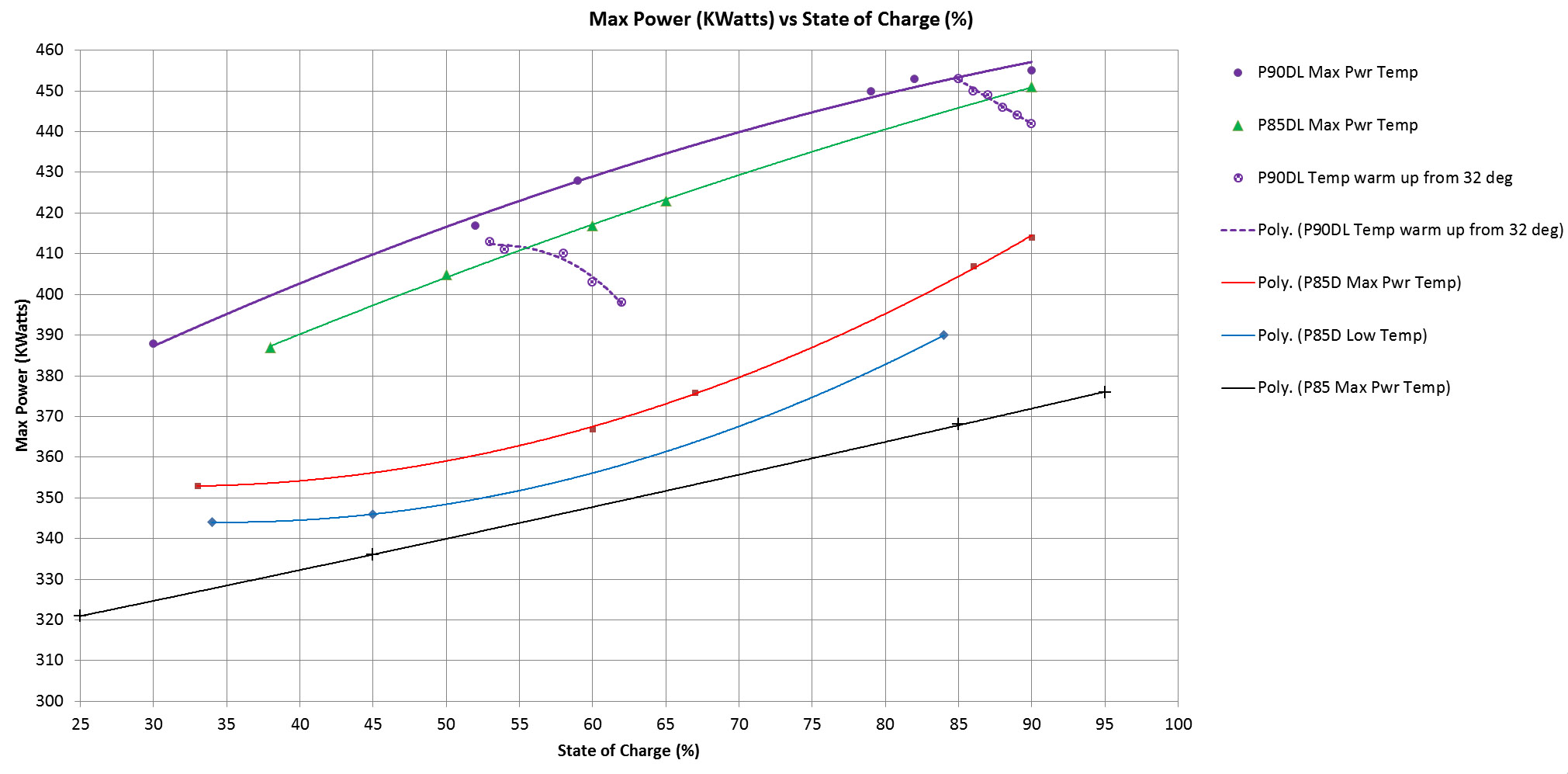I've been collecting data from various threads in an attempt to understand how battery Max Power varies with battery State of Charge (SOC) and temperature. Here are the results so far:

Since receiving my P90DL, I've been able to add some of my own data including a test of how the max power is effected by temperature as the battery warms up during usage. The dashed purple line shows data collected from a "cold" battery in 32 degrees temperature. It appears that it takes about 15% of battery driving drain before it gets close to max power.
If anyone would like to contribute to the data, the IOS PowerTools app will allow you to measure the max power during a hard acceleration. Probably the easiest way to collect this is to briefly floor it while traveling at 30 mph. You can changed the power measurement from HP to KW in the settings area.
Since receiving my P90DL, I've been able to add some of my own data including a test of how the max power is effected by temperature as the battery warms up during usage. The dashed purple line shows data collected from a "cold" battery in 32 degrees temperature. It appears that it takes about 15% of battery driving drain before it gets close to max power.
If anyone would like to contribute to the data, the IOS PowerTools app will allow you to measure the max power during a hard acceleration. Probably the easiest way to collect this is to briefly floor it while traveling at 30 mph. You can changed the power measurement from HP to KW in the settings area.
Last edited:



